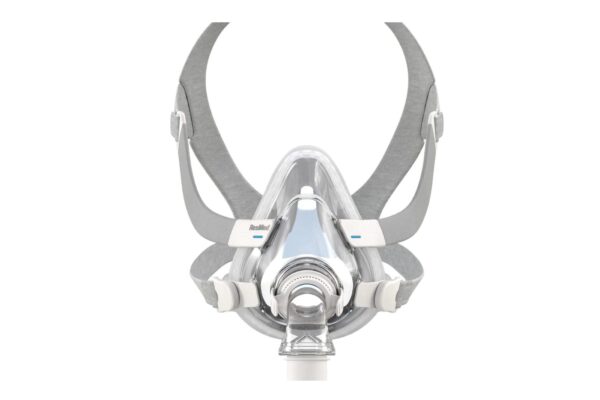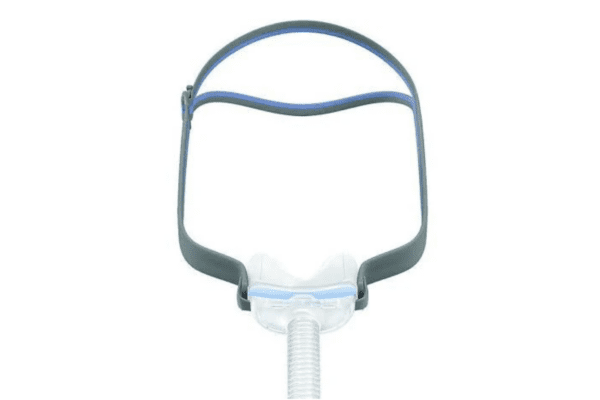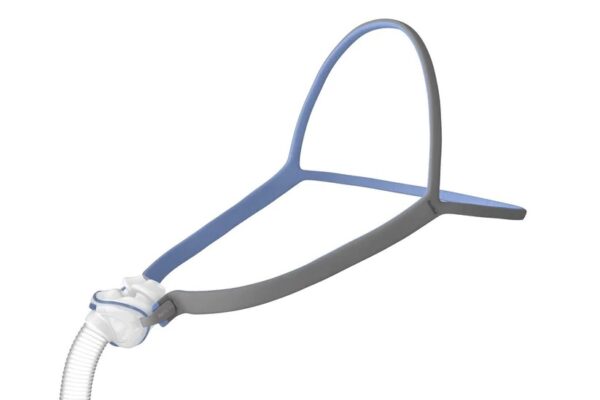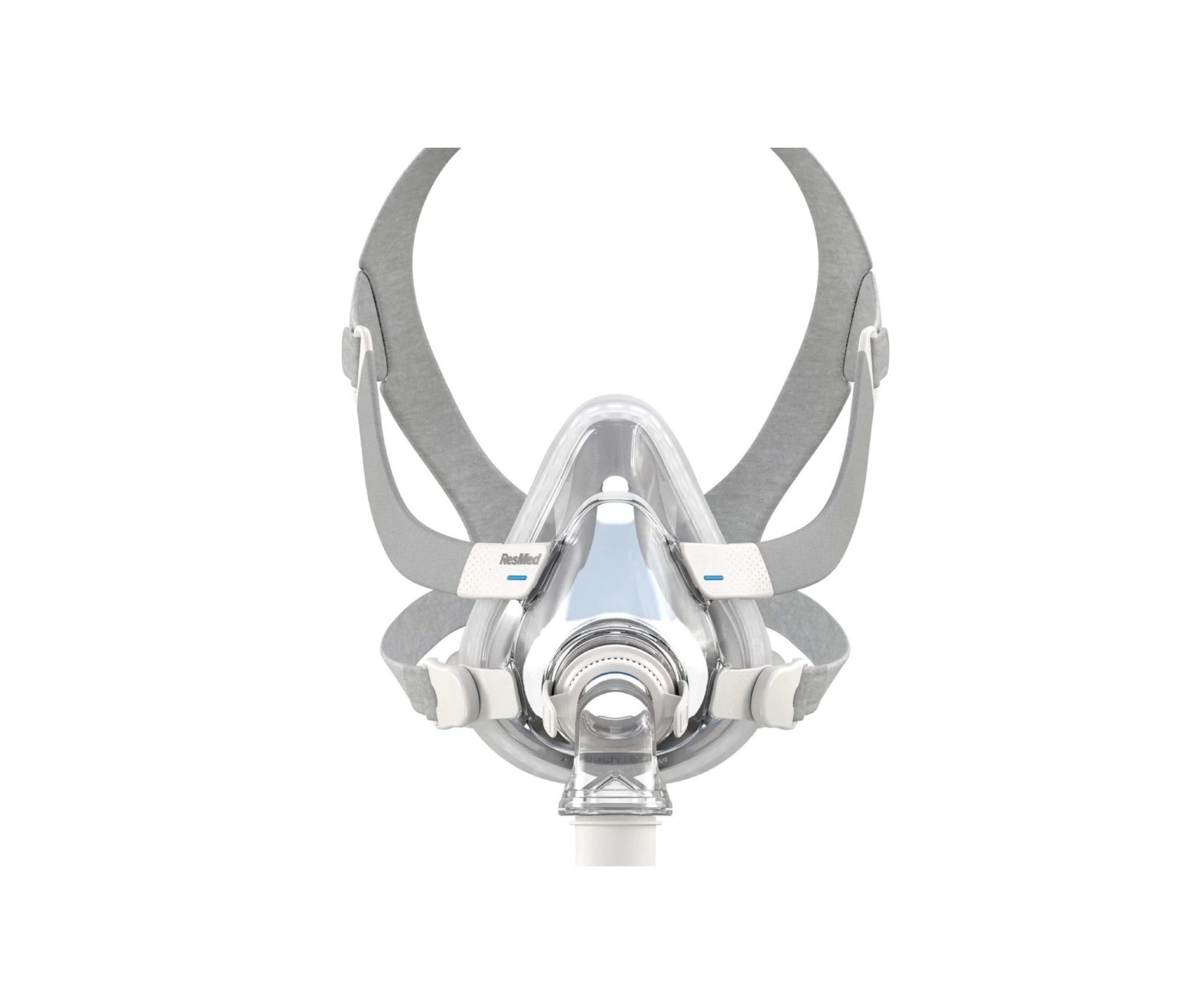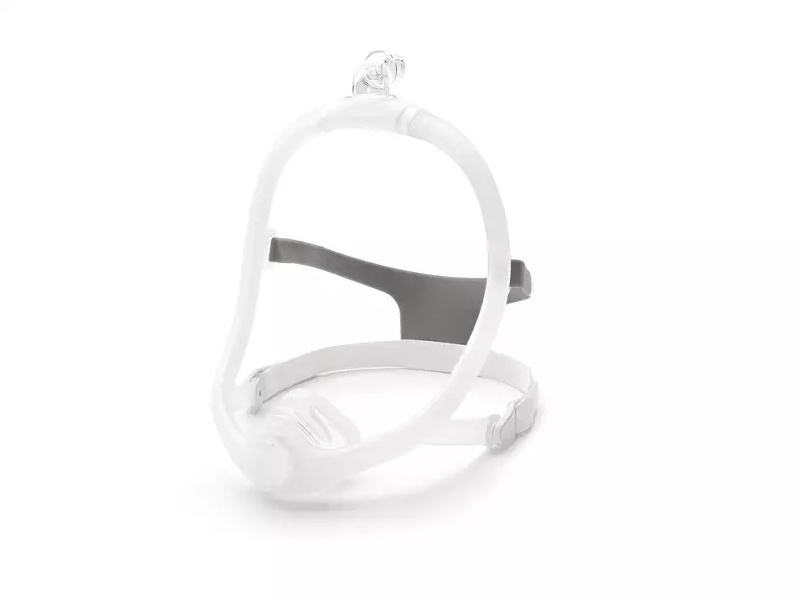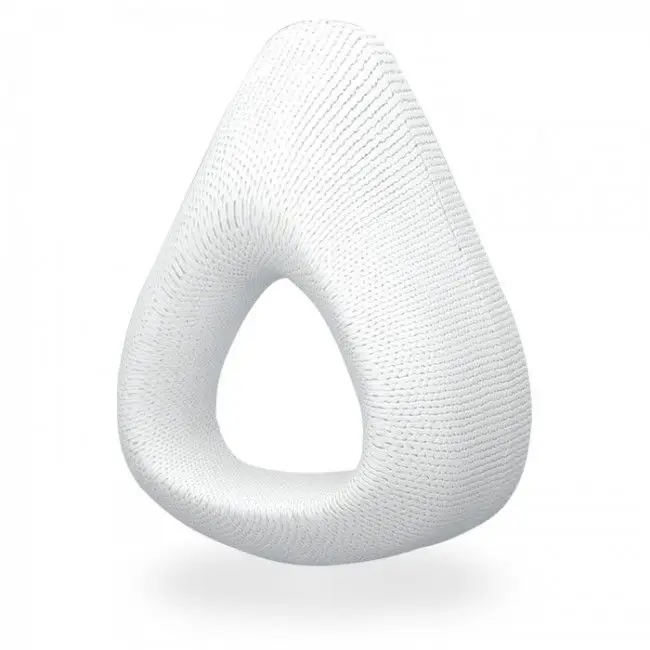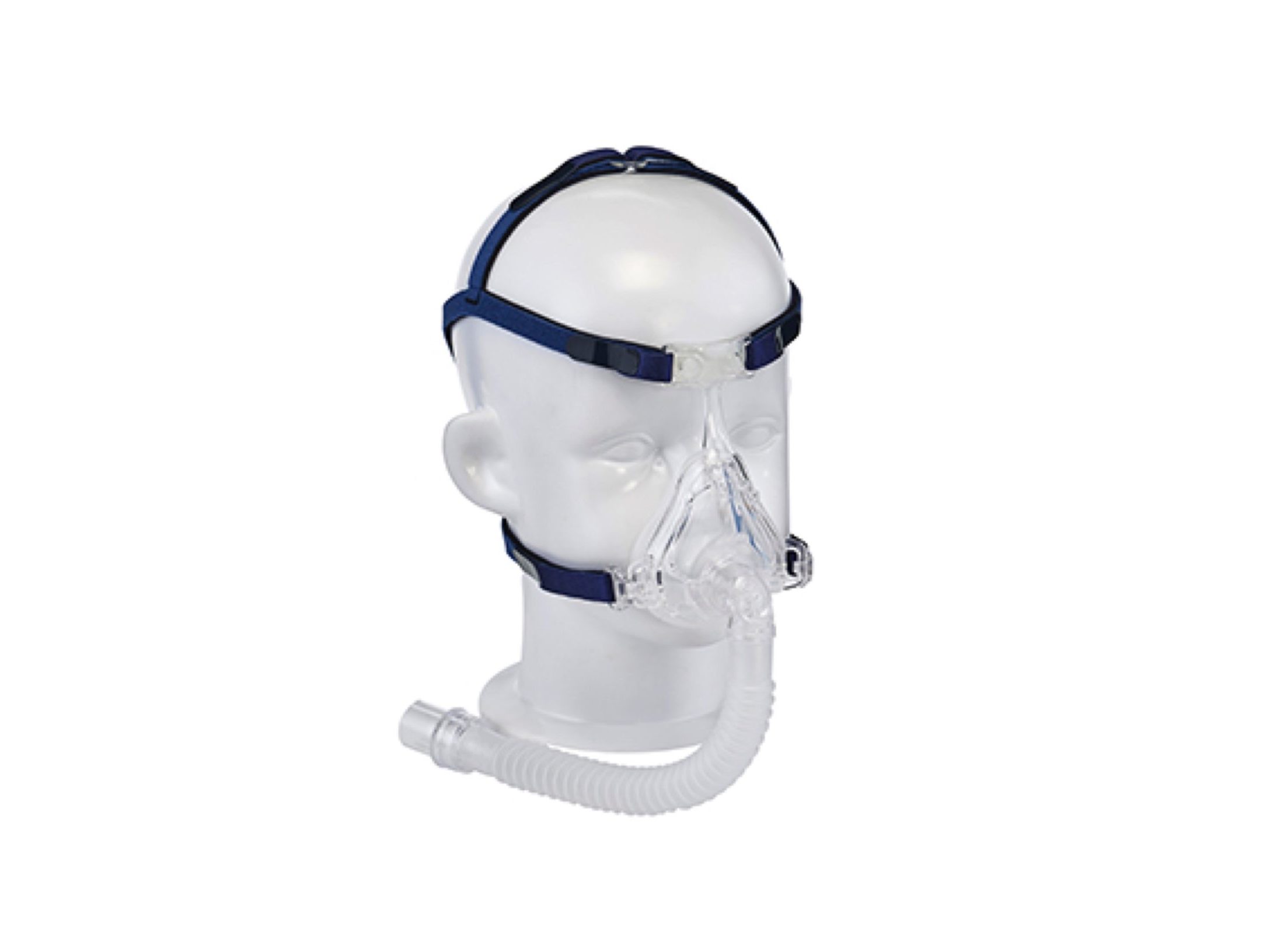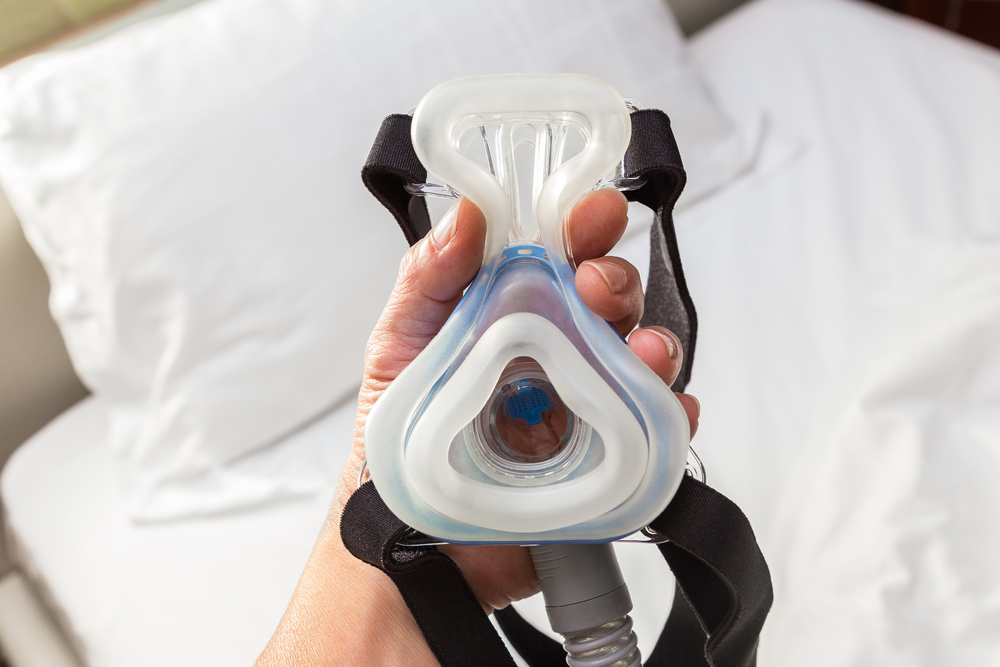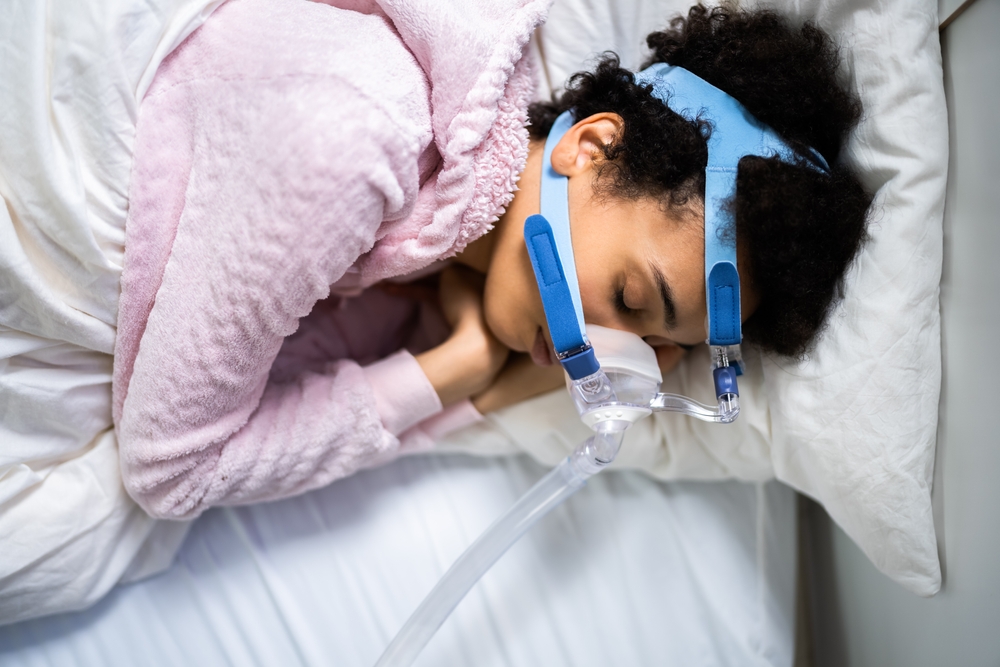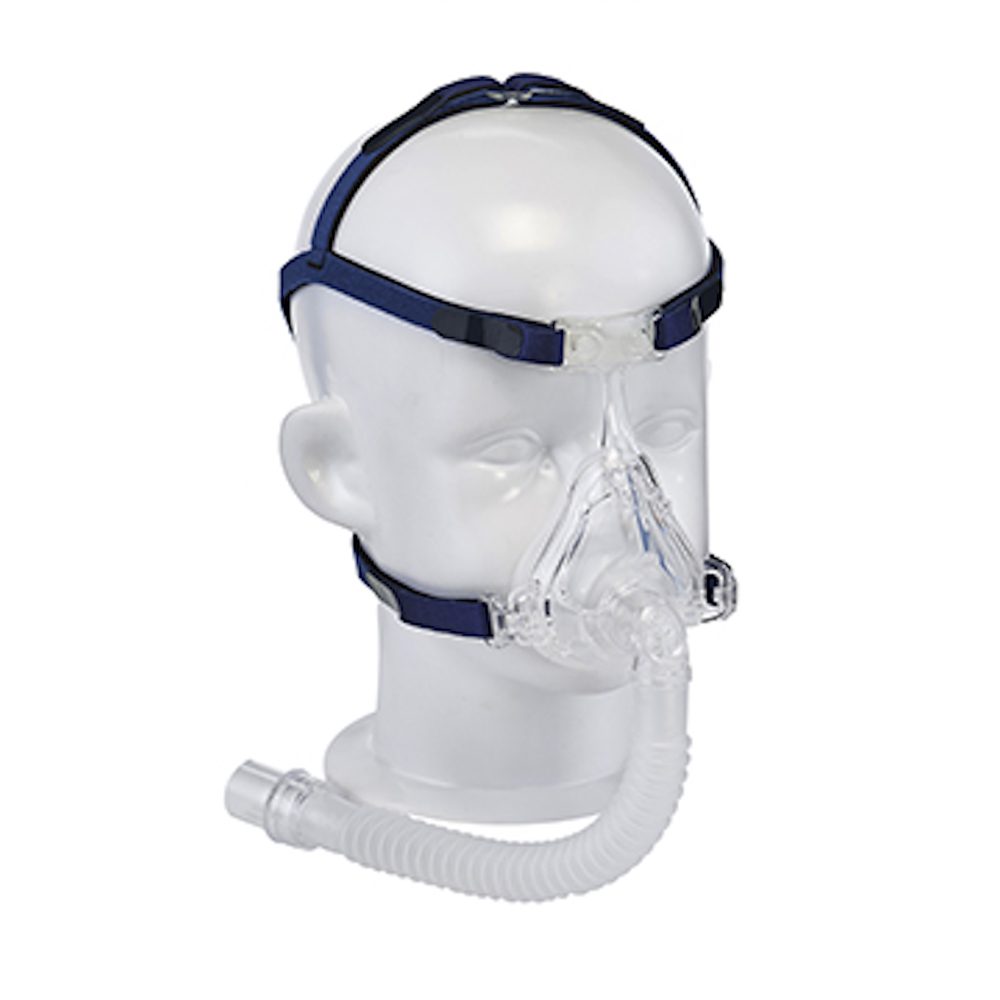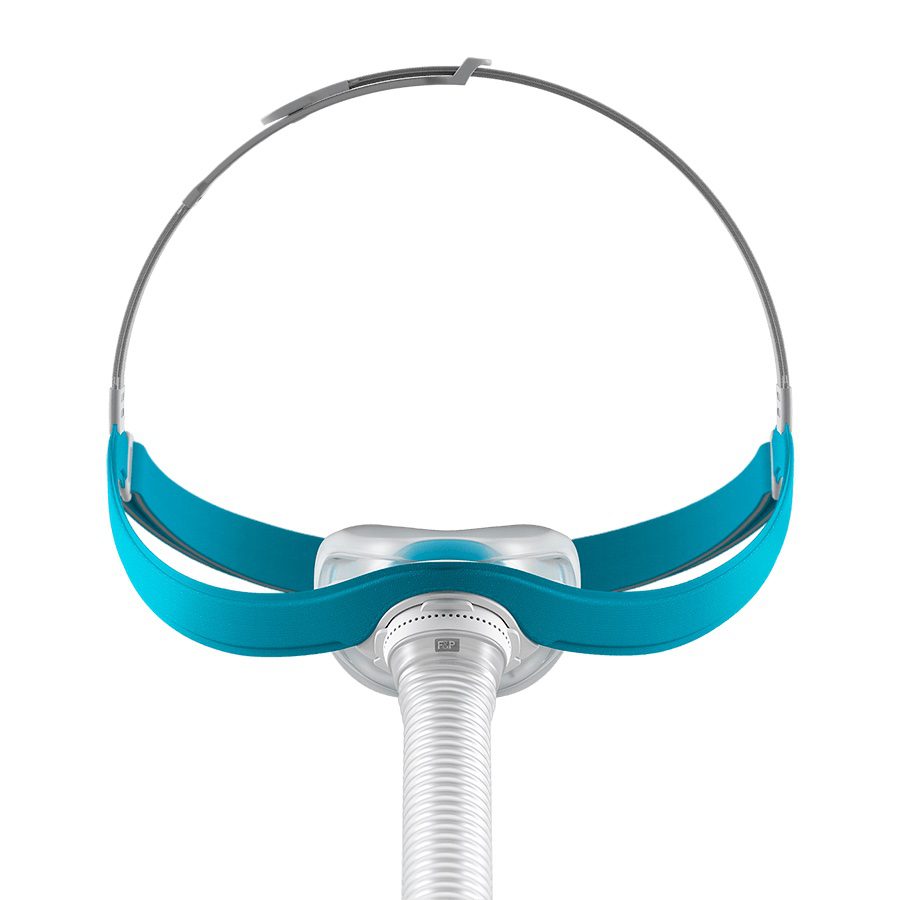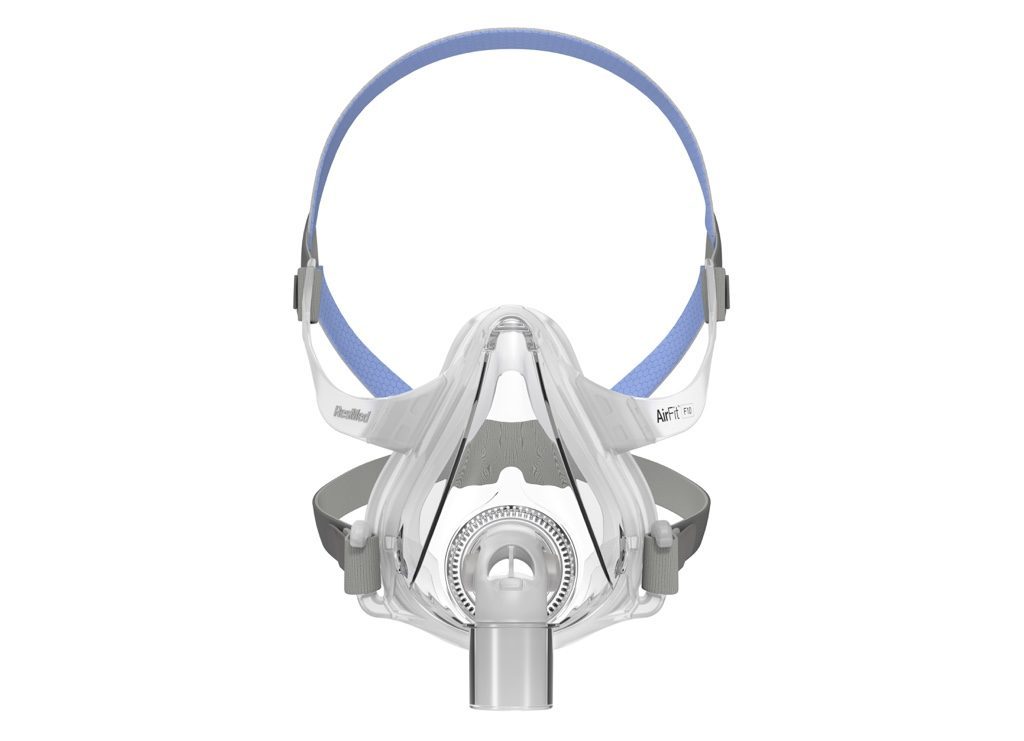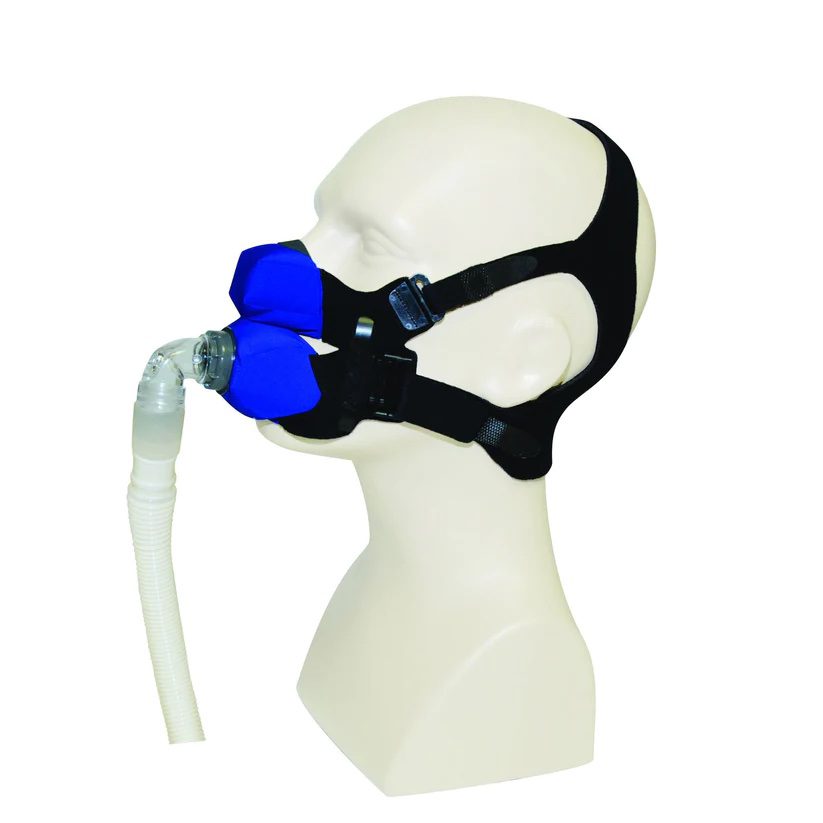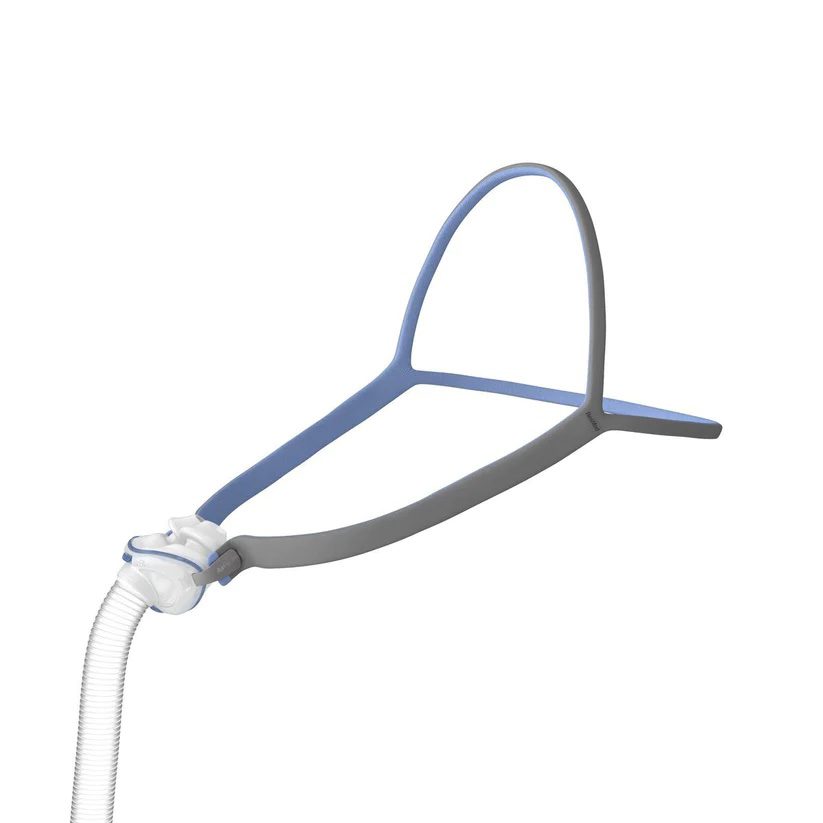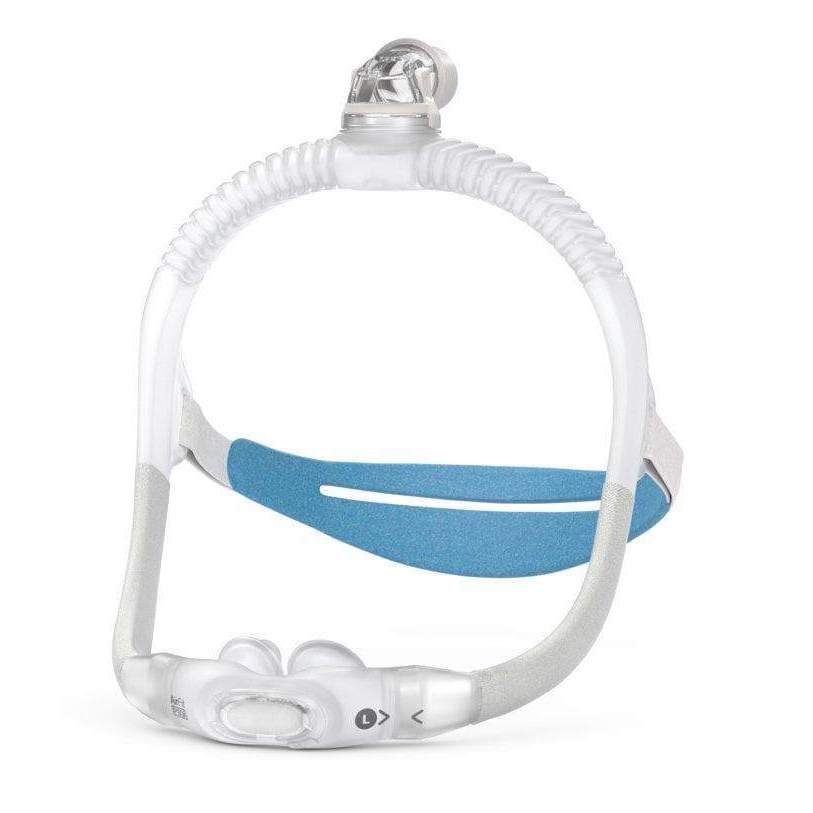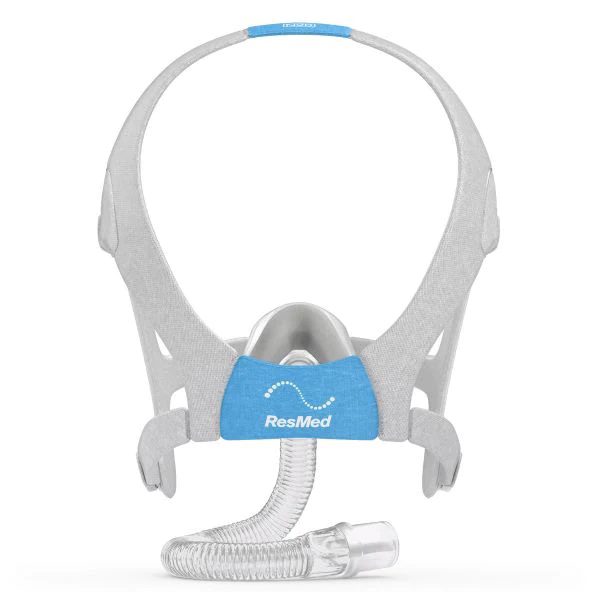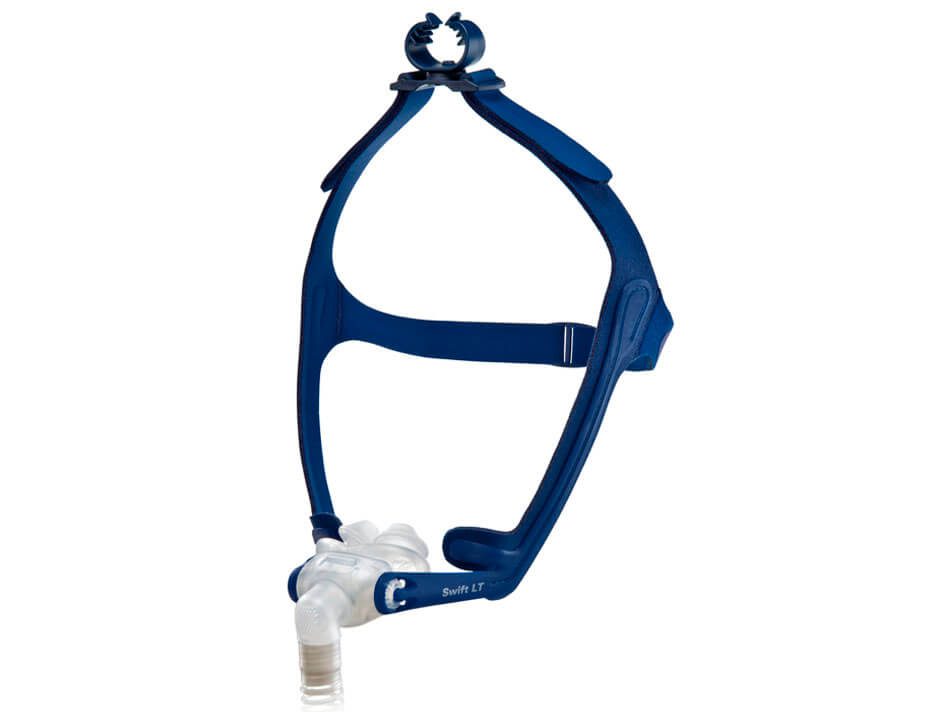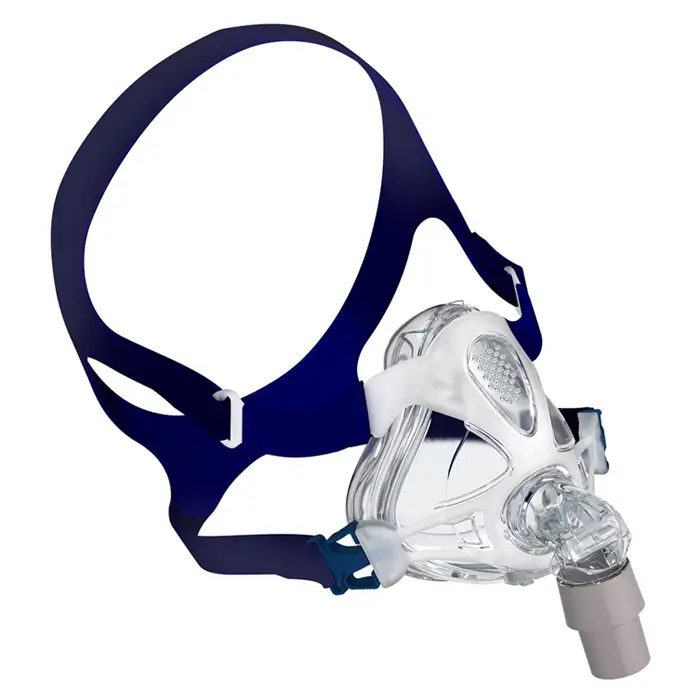If you are new to CPAP therapy or considering a new type of CPAP mask, you may wonder how to choose the best mask for the position you usually sleep in.
Sleep position is an important consideration when finding a mask that fits comfortably and seals properly. Sleeping in a mask that is uncomfortable can make it hard to adhere to your sleep apnea treatment. And a mask that doesn’t seal well can cause side effects and make CPAP therapy less effective.
We cover the different types of CPAP masks, how to choose a mask that suits your normal sleep position, and conditions that can affect the fit of your mask. We also provide some important tips for getting better sleep while using a CPAP machine.
The Different Types of CPAP Masks
If you are diagnosed with sleep apnea and are prescribed CPAP therapy, you’ll find that there are a variety of mask styles available to use with your CPAP machine. The three main CPAP mask types are nasal masks, nasal pillows, and full-face masks.
- Nasal mask: This triangular mask covers the nose only, from the bridge of the nose to the upper lip. The mask is usually held in place with a strap that goes around the head. A nasal mask works well for people who require an air pressure higher than what a nasal pillow can offer.
- Nasal pillow: A nasal pillow consists of two openings that sit just inside each of the nostrils. This CPAP mask design is lightweight and has minimal contact with your face. However, it’s not the best option if you require a high air pressure setting to benefit from CPAP.
- Full-face mask: Also called an oronasal mask, this mask covers both the nose and mouth and is usually secured in place with head straps. It is bulkier than the other mask types but works better if you mainly breathe through your mouth or require a high air pressure setting.
Your doctor or sleep specialist can help you choose a comfortable mask type that adequately treats your sleep apnea. You may find that you need to try several masks before deciding on the one that’s best for you.
Choosing a CPAP Mask Based on Your Sleep Position
Your sleep position can affect how well a CPAP mask works and whether it is comfortable to wear throughout the night.
To get the full benefit from a CPAP device, you should wear a mask that forms a secure seal with no air leaks. Since sleep position can affect the mask seal, it’s important to choose the CPAP mask that’s most compatible with the way you normally sleep.
Best Mask for Side Sleepers
People who sleep on their side may get the greatest benefit from nasal pillows or nasal masks, because these cover less of the face and are less bulky than full-face masks.
Research shows that side sleeping is the most common sleep position. Because airway obstructions can be more frequent when sleeping on your back, side sleeping is the recommended sleep position for people with sleep apnea.
If you choose to wear a nasal mask, make sure there is a good seal between your mask and your face and soft, flexible headgear to keep your mask in place.
Best Mask for Back Sleepers
If you are a back sleeper, you can choose any CPAP mask that suits you, whether it be a nasal mask, nasal pillow, or full-face mask. The back of your head, not your face, rests on a pillow in this position, so the mask won’t be obstructed.
Back sleeping is the second most common sleep position, after side sleeping. But sleeping on your back is the least favorable position if you have sleep apnea, because gravity pulls down the tissues in your mouth and may contribute to airway collapse. Back sleeping has the advantage of keeping the spine in alignment, and the lower back may be supported by placing a pillow or two under the knees. People with neck, shoulder, hip, or knee problems may prefer sleeping on the back or having that position available during sleep. The prescribed CPAP pressure should be high enough to keep an open airway during sleep on the back.
Best Mask for Stomach Sleepers
The best type of CPAP mask for stomach sleeping is a nasal pillow, since it’s lightweight and compact and has less mask surface for maintaining a good seal.
Stomach sleeping is the least common sleep position and the most likely to aggravate joint or spine problems. Because a large portion of your face rests on your pillow, sleeping on your stomach with a CPAP mask can be uncomfortable. A bulky mask can press against your face and cause air leaks. It can also add to the neck and back pain that many stomach sleepers already experience.
Other Conditions That Affect CPAP Mask Fit
Aside from sleep position, other variables can influence CPAP mask selection and affect whether people use their CPAP machines. These include nasal congestion, air swallowing, mouth leaks, mask seal, and claustrophobia.
Nasal Congestion
Nasal congestion, or a stuffy nose, can make it difficult to breathe through your nose, especially when breathing through a nasal or nasal pillow CPAP mask. A stuffy nose can be caused by a cold, allergies, dirty CPAP filters, gravity-related changes in blood flow when lying down, or PAP therapy itself. People with nasal congestion should consider addressing the condition with nasal saline, medicated nasal sprays, or the management of environmental allergens. Although breathing through the nose is preferable for health, those with persistent nasal blockage can use a CPAP mask that covers the mouth so the pressurized air can be delivered orally.
Swallowing Air
Nasal masks and nasal pillows are the mask styles typically recommended if you have aerophagia, a condition in which you swallow a lot of air and your stomach becomes upset. Another option is to wear a chin strap with your CPAP mask to help keep your mouth closed during sleep and improve aerophagia.
Switching from a CPAP to an auto-adjusting positive airway pressure (APAP) machine may also reduce aerophagia, because an APAP can use lower pressure settings and automatically adjusts the air pressure while you sleep.
Mouth Leak
People who use nasal pillows or nasal masks may render the CPAP therapy less effective if they have mouth leaks. Mouth leaks occur when your nose breathes in air from your CPAP equipment, but the air goes out through your mouth before it can reach your airway and lungs.
This unwanted direction of airflow can usually be fixed by wearing a chin strap to keep your mouth closed while you sleep. If a chin strap does not fully prevent mouth leaks, your doctor may recommend a full-face mask instead.
Mask Seal
Air can leak out of your mask if there isn’t a good seal between the mask and your face. If you are having issues with the seal of your mask, first try to adjust the length of the head straps clipped into your mask.
If you have to tighten the head straps to the point where you feel uncomfortable, then you may need a different mask size or style that better fits your face. You can talk with your sleep specialist to be refitted for another mask size or determine what other mask styles could work.
Claustrophobia
People who experience claustrophobia, or fear of tight spaces, may find the full-face or nasal mask difficult to tolerate. A nasal pillow is likely the best CPAP mask type in this case, because it is lightweight and makes a seal only at the rims of the nostrils.
You may also try desensitizing yourself to wearing a nasal or full-face CPAP mask. Try wearing your mask during the day while doing something relaxing, such as watching television or reading a book. Start small by wearing your mask for a short amount of time. Gradually increase the amount of time you wear the mask until you become comfortable with it.
Customizing Your CPAP Mask and Pillow
Once you choose a type of CPAP mask, you can further customize it to meet your preferences and needs. Talk with your doctor or a sleep specialist about mask concerns, including factors that can affect comfortable fit such as facial hair, nose shape, and mask material.
You can choose to resize the mask to better fit the contours of your face or choose the cushion material that feels the most comfortable. There are also many types of headgear, chin straps, clips, and other accessories that you can choose from to stabilize the mask in place.
If you change the cushion material or mask type, your CPAP air pressure may need to be adjusted. Do not attempt to adjust your CPAP air pressure on your own. Instead, talk with your doctor or sleep specialist to discuss your CPAP machine settings.
If you sleep on your side or stomach and wear a CPAP mask, a CPAP pillow may be helpful. CPAP pillows support your cervical spine and have cutouts and curves in them to hold your CPAP mask and tubing. A CPAP pillow may be especially beneficial if you wear a full-face or nasal mask, which are bulkier than nasal pillows.
Tips Getting Better Sleep While Using a CPAP Machine
You may have questions about how to get optimal sleep if you are just starting CPAP therapy or have a new CPAP mask, accessories, or equipment.
In addition to maintaining a healthy sleep routine, you can check your mask for air leaks, rethink your sleep position, and make sure your CPAP machine is clean. These steps can help ensure you get a good night’s rest while using your CPAP.
Check for Air Leaks
When putting on your CPAP mask, position your mask as you normally would while sitting upright. Making sure it’s not too tight and that there is a good seal. Then turn on your device and lie in your normal sleep position. Check the seal of your mask to make sure it is still secure.
Your facial muscles may change positions while you’re asleep, resulting in a looser or tighter seal between your face and the mask. In that case, you can readjust your headgear straps for the best fit.
Change Your Sleep Position
Sleeping on your side is believed to be the best position for reducing breathing interruptions caused by sleep apnea. If you have sleep apnea and typically sleep on your back, you may be able to train your body to move to another position while you sleep. This is called positional therapy.
Various devices are marketed to help people avoid back sleeping. However, you can also try a simple at-home strategy to keep from rolling on your back while you sleep.
Instead of your typical nighttime clothes, wear a pocketed t-shirt with the pocket placed in back and insert a tennis ball into the pocket. Lie down for sleep in a side-sleeping position. If you try to roll over from your side onto your back, you will feel discomfort from the ball and roll back onto your side.
Clean Your CPAP Mask and Machine
CPAP masks may leak air when dirt and oils from the skin accumulate on the mask. Germs can also collect in the mask and make you sick. Clean your CPAP mask daily to avoid this buildup of dirt, oils, and germs.
CPAP masks and tubing can usually be washed with soap and water and hung up to air dry. To clean your CPAP machine, unplug your device and wipe it off with a washcloth. Empty the water from the humidifier and clean the tank, and rinse reusable filters or replace disposable filters.
If your CPAP machine is new to you, be sure to read the manufacturer’s instructions on the use and cleaning of your device. If you encounter any problems as you use and clean your machine, contact your doctor or sleep specialist.



